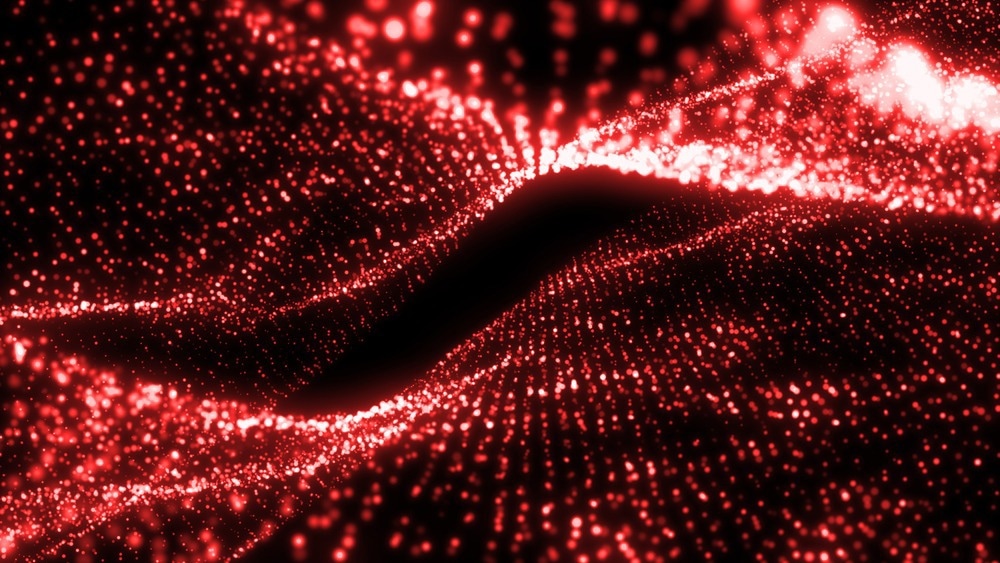In recent years, the conversion of low-energy infrared photons to higher-energy visible light photons via infrared-to-visible upconverters has attracted a great deal of scientific interest. However, conventional upconverters have restricted detection wavelengths, high baseline infrared energy, and poor photon-to-photon effectiveness.

Study: Ultrasensitive Colloidal Quantum-Dot Upconverters for Extended Short-Wave Infrared. Image Credit: Alexey Godzenko/Shutterstock.com
A recent study published in the journal ACS Applied Materials & Interfaces addresses this issue by developing a colloidal quantum dots upconverter with enhanced short-wave infrared conversion capabilities.
What is Infrared-to-Visible Upconversion?
Photon upconversion transforms two or more low-energy photons into a photon with greater energy. Effective upconversion of infrared photons to visible photons could have a variety of applications such as sub-bandgap stimulation of devices for photovoltaics and infrared sensing, deep-tissue biomedical imaging, neuroimaging, and three-dimensional projections.
Several of these applications would profit from effective upconversion at low optical stimulation intensities, with an adjustable response across a wide exposure and emission spectrum.
An upconverter avoids the need for complex processing stages like pixelation, indium bump development, and flip-bonding, hence providing a possible path for realizing high-resolution, low-cost infrared images.
Early investigations of upconversion are based on techniques in which two photons produce a single high-energy photon through triplet-triplet annihilation, two-photon absorbance, and rare-earth photon transformation.
According to these findings, small organic compounds that experience two-photon absorption or triplet-triplet annihilation may deliver promising outcomes in upconversion applications with moderate excitation intensities.
Challenges Associated with Infrared-to-Visible Upconversion
These processes are confined to visible-to-visible photon upconversion, while infrared-to-visible photon upconversion is still limited to incident waves of shorter wavelengths.
Many infrared-to-visible upconverters are built using inorganic or organic infrared-emitting substances, which results in several challenges, including lattice incompatibility concerns, expensive production techniques, and poor optical absorbance. Consequently, the first obstacle is the selection of substances having tuneable band gaps over a broad range of wavelengths. Nanomaterials such as colloidal quantum dots may be highly useful in this respect.
Upconversion devices comprised of infrared photodetectors (PDs) and visual light-emitting diodes (LEDs) can help circumvent spectral range limitations by transforming infrared photons with longer wavelengths.
In addition, current infrared-to-visible upconverters work only under strong infrared radiations with high power, usually working under the infrared power density, and the majority of them have a photon-to-photon efficiency of around 1%. In the field of infrared-to-visible upconversion, creating a suitable approach for increasing the performance of upconversion devices continues to be a significant problem.
Colloidal Quantum Dots for Upconversion Applications
Colloidal quantum dots are nanoscale semiconductor crystals whose dispersal in liquids is enabled by surface ligands. These colloidal quantum dots could be incorporated into electronics utilizing solutions-based assembly techniques.
Colloidal quantum dots (CQDs) appear to be viable replacements for traditional organic/inorganic substances in upconversion applications. Colloidal quantum dots with size-tunable band gaps have been employed extensively in the photodetection and light emission sectors, the two primary photonic transition mechanisms of infrared-to-visible upconverters.
Colloidal quantum dots may also be employed as infrared detecting and visible emitting substances because of their small spectrum bandwidths and good luminescence quantum efficiency.
In addition, the variability of voltage and luminance of LEDs based on colloidal quantum dots is not linear. Allowing colloidal quantum dots to operate in an appropriate bias voltage spectrum in which the fluctuation of luminance with voltage is highest is crucial to developing high-performance upconverters.
Highlights and Key Developments of the Current Study
In this work, mercury telluride colloidal quantum dots were employed as infrared detection substances for enhanced short-wave infrared (SWIR) upconversion. The impedance area components of the mercury telluride-based photodetector were tuned to ideally match the working voltage levels of the LEDs made of colloidal quantum dots to achieve excellent upconversion efficiency.
The photoactive colloidal quantum dots upconverter produced a high degree of luminance change, resulting in a low minimum measurable infrared power. In addition, the as-prepared colloidal quantum dots upconverter exhibited ultra sensitivity with an extremely low detection limit and almost 30% photon-to-photon (p-p) efficiency.
This infrared-to-visible p-p efficiency is the determining factor for assessing the effectiveness of upconversion systems based on colloidal quantum dots. The p-p upconversion effectiveness is determined by the number of visible light photons released in the presence of infrared light by the colloidal quantum dots upconverter.
Based on these results, it is reasonable to conclude that the colloidal quantum dots replacing traditional organic/inorganic substances and the optimal matching method of PDs and LEDs provide a viable solution to long-standing issues in upconversion systems.
Reference
Mu, G. et al. (2022). Ultrasensitive Colloidal Quantum-Dot Upconverters for Extended Short-Wave Infrared. ACS Applied Materials & Interfaces. Available at: https://pubs.acs.org/doi/10.1021/acsami.2c12002
Disclaimer: The views expressed here are those of the author expressed in their private capacity and do not necessarily represent the views of AZoM.com Limited T/A AZoNetwork the owner and operator of this website. This disclaimer forms part of the Terms and conditions of use of this website.